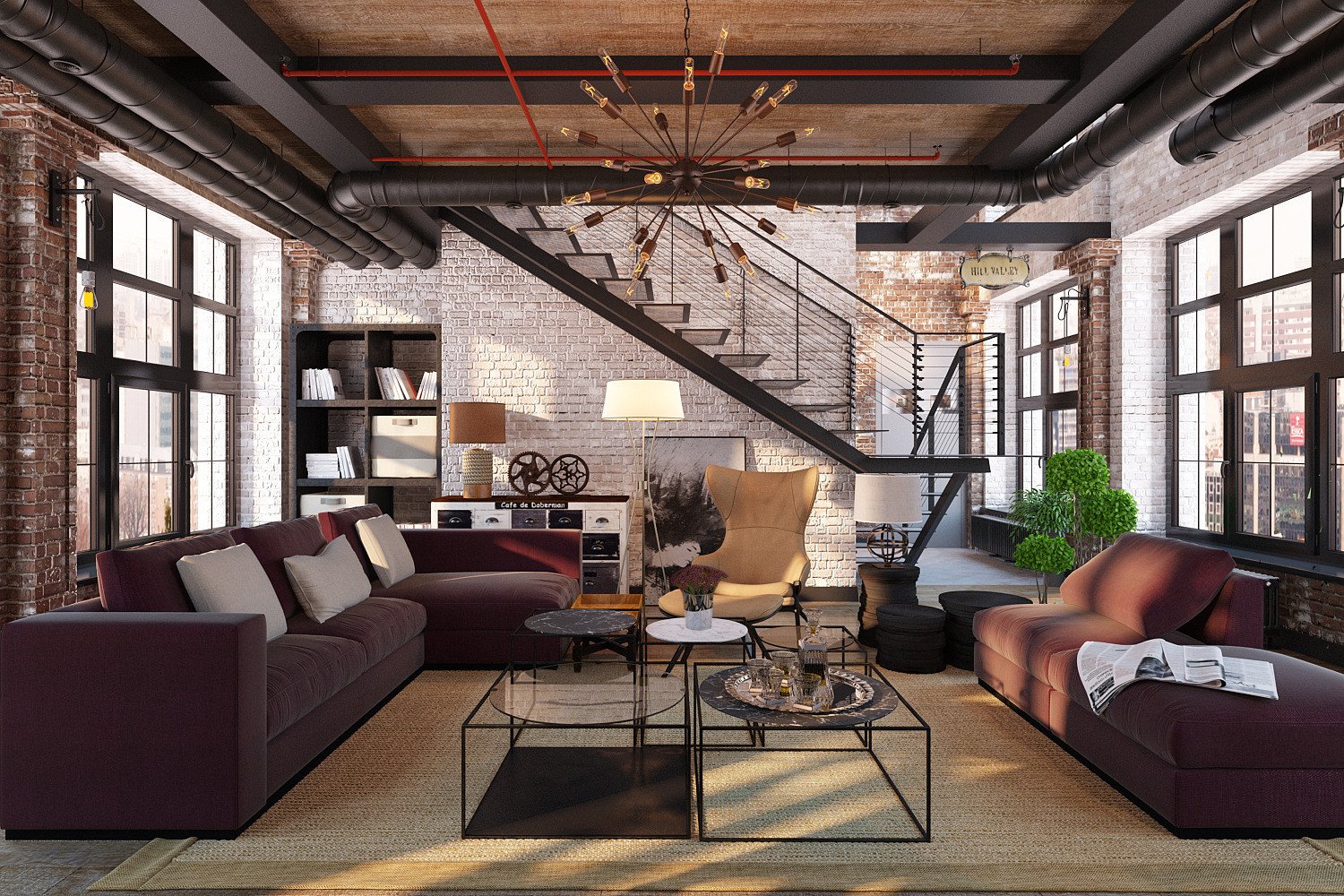#6935. Industrial Open-Plan Loft: A Harmony of Brick, Metal, and Comfort

This impressive interior represents a striking example of industrial loft design, where historical architectural appearance harmoniously combines with modern design solutions. The space is characterized by an open floor plan, high ceilings, and exposed structural elements that are key features of loft aesthetics.
Brick walls, partially painted white, create a textural contrast and preserve the industrial character of the space while simultaneously making it lighter and more spacious. Exposed utilities on the ceiling—ventilation pipes and red fire system lines—are not hidden but rather transformed into decorative elements that emphasize the building's industrial heritage.
Central attention is drawn to the metal staircase with minimalist railings leading to the second level. It is not only functional but serves as a compositional dominant, dividing the space into zones without physically closing it off. Above the living area hangs an effective "star-shaped" chandelier with exposed light bulbs—an element that adds character and atmosphere to the room.
The furniture composition is organized around two burgundy sofas positioned perpendicular to each other and an accent sand-colored leather armchair. Black metal coffee tables with different tabletop finishes add geometric precision and echo the metal details of the staircase and window frames.
The design also incorporates elements made of wood and natural materials: a sisal rug, indoor plant, and wooden accessories. These soften the coldness of the industrial style and add coziness. Large panoramic windows in black frames provide abundant natural light and visually connect the interior with the outside world.
When designing a country house in a similar style, it's worth paying attention to maintaining or creating an open floor plan, using natural textured materials, and contrasting combinations (light walls—dark furniture, soft textiles—rigid metal details). Key techniques include functional aesthetics where utilities become part of the design, multi-level lighting with accent fixtures, and creating various functional zones within a single space.